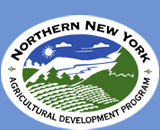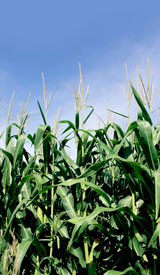

Northern New York Agricultural Development Program Press
Releases
PRESS RELEASE: September 1, 2006
Contact: Everett D. Thomas, W.H. Miner Agricultural Research
Institute, 518-846-7121x115
Quality vs. Quantity: Can Dairy Farmers Have Both?
Quality versus quantity � can North Country farmers have both when it
comes to harvesting forage for their dairy cows. To learn if alfalfa and
grass crops can be harvested with high quality and the highest possible
yields, the Northern New York Agricultural Development Program is
funding research at the W.H. Miner Agricultural Research Institute in
Chazy, NY. Project leader and Miner Institute Vice President of
Agricultural Programs Everett D. Thomas says, �Clearly, mowing closer to
the ground will yield more forage. Quality is the issue. Dairy cows need
high quality forage to produce milk.�
Miner Institute is evaluating the quality and yield of alfalfa and an
alfalfa-grass mix cut at the currently recommended height of two inches
compared to a four-inch height that�s common on many farms. An
alfalfa-reed canarygrass forage mix is being field- and hand-harvested
at both heights.
Thomas says, �First cut results certainly appear to support the shorter
cutting height. Yields were significantly higher at 2 tons versus 1.7
tons per acre of dry matter with only a modest effect on predicted milk
production per ton of alfalfa. Milk per ton was three percent higher for
the four-inch cutting height, but milk produced per acre of forage was
twelve percent lower. While it�s too soon to make a conclusion, the
small increase in quality from the 4� cutting height wouldn�t seem to be
worth the much larger decrease in yield.
The Miner Institute research staff analyzed the alfalfa and grass
separately for both cutting heights and found very little difference in
fiber digestibility. He says, �Based on the first harvest of this trial
and a 2005 trial, I see no reason to mow higher than normal other than
to avoid stones and field scalping.�
A low cutting height can scalp the soil, particularly on the uneven
fields common to farms in the Northeast, and can impact alfalfa�s
regrowth if the mower damages the crown of the plant. Thomas says
evaluation of second and third cut harvests will indicate whether the
lower cutting height had any effect on alfalfa or grass regrowth. A
complete report is expected later this year.
The Northern New York Agricultural Development Program funds research
and education outreach for Essex, Clinton, Franklin, St. Lawrence, Lewis
and Jefferson counties. For more information, go online to
www.nnyagdev.org
